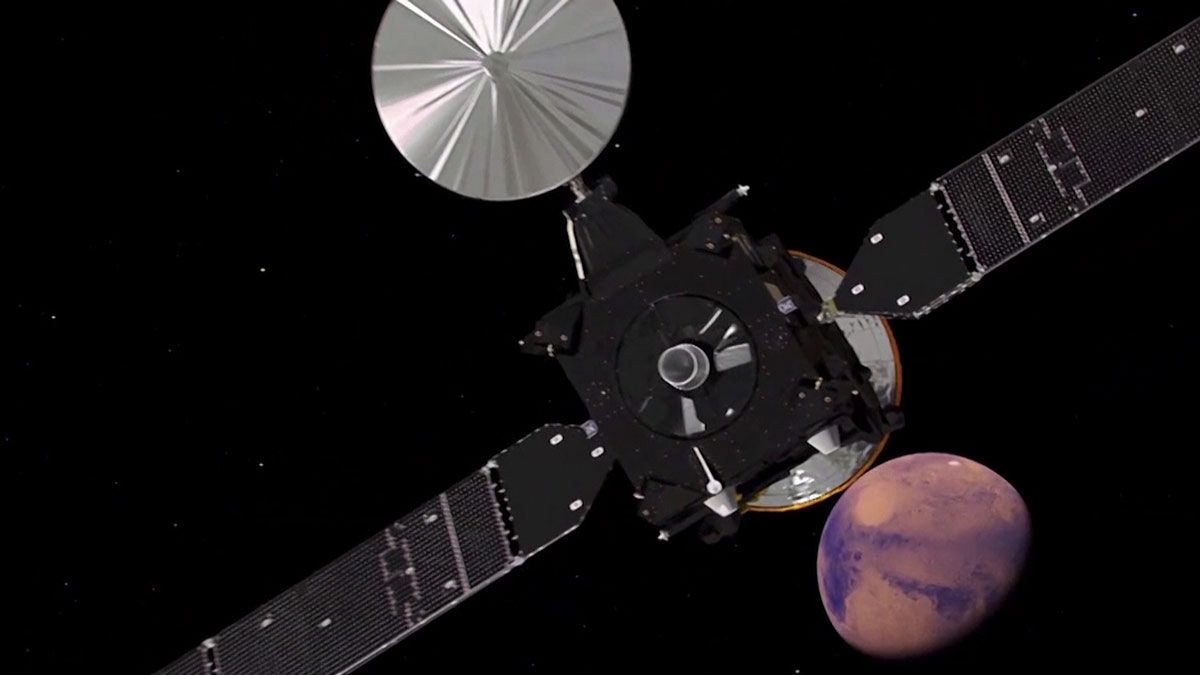Landing on Mars is notoriously difficult.
Landing on Mars is notoriously difficult.
But Europe and Russia are attempting to do just that – in the shape of Schiaparelli.
That is the name of the lander to be released on Sunday by a mothership, known as the Trace Gas Orbiter or TGO. A parachute will help slow Schiaparelli’s descent.
It is a hugely delicate operation where timing is everything.
.@ESA_TGO has just one chance to enter Mars orbit next week, #ExoMars spacecraft and team are ready for arrival https://t.co/SqXmH2w4Wepic.twitter.com/SmjQDYgHuI
— ESA (@esa) 14 octobre 2016
“We separate not too early so that the accuracy of landing is good but also not too late so that we have time then to reorientate the TGO and actually raise its altitude and not crash on Mars,” explained Michel Denis, ExoMars Flight Operations Director at the European Space Agency (ESA).
The mission blasted off in March from the Baikonur spaceport in Kazakhstan on board a Proton rocket, starting a seven-month journey through space.
It is the latest stage of the Exomars collaboration between the European and Russian space agencies, seeking signs of trace gases like methane — which on Earth is strongly tied to life — and which on previous Mars missions has been detected in the planet’s atmosphere.
If all goes well, come 2020, an Exomars rover, equipped with a drill, will follow to study the red planet in depth.
Is there life on Mars? The answer could be within reach.
Follow key moments in #ExoMars timeline for #Mars arrival over the next week https://t.co/dfGfyPVRQOpic.twitter.com/AZeR4gUnFd
— ESA (@esa) 14 octobre 2016
